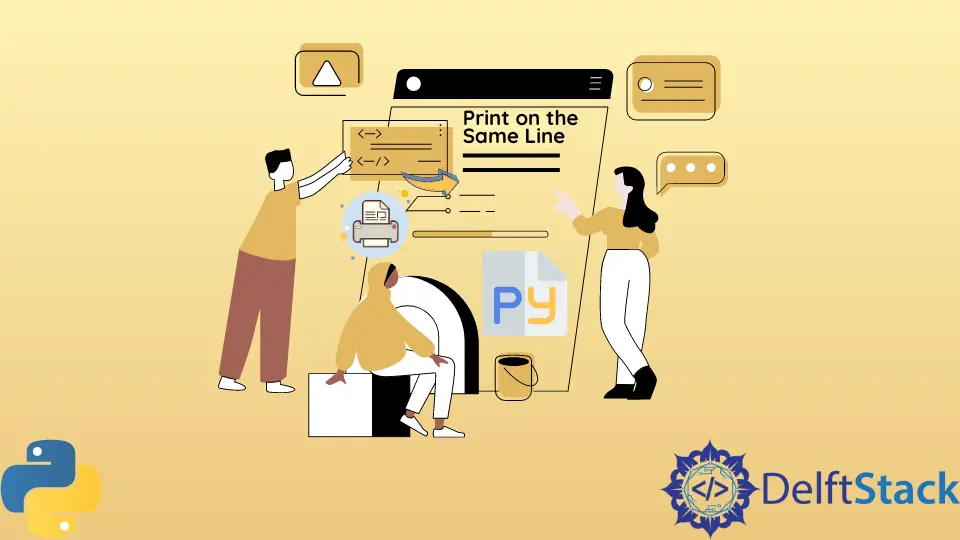Python 中在同一行上打印
Muhammad Waiz Khan
2023年10月10日

本教程将讲解 Python 中在同一行打印多个东西的各种方法。通常情况下,print() 方法每次都会打印新行中的内容。我们可以使用下面的方法在 Python 中在同一行打印多个内容。
在 Python 中使用 print() 函数在同一行上进行多次打印
print 方法接收一个字符串或任何有效的对象作为输入,将其转换为一个字符串,并打印在屏幕上。要在 Python 中使用 print 函数在同一行打印多个东西,我们将不得不根据 Python 版本的不同遵循不同的方法。
Python 2.x
在 Python 2.x 中,我们可以在 print 方法的末尾加上 , 操作符,在同一行上多次打印。下面的示例代码演示了如何在 print 函数中实现这一点。
print "hello...",
print "how are you?"
输出:
hello...how are you?
Python 3.x
而在 Python 3.x 中,我们必须改变 print() 方法的 end 参数的值,因为它默认设置为\n。下面的示例代码演示了我们如何使用 print() 方法,并将 end 参数设置为"",在同一行上多次打印。
print("hello...", end=""),
print("how are you?")
输出:
hello...how are you?
在 Python 中使用 sys 模块的 stdout.write() 方法在同一行上多次打印
sys 模块的 stdout.write() 方法在屏幕上打印输出。由于 stdout.write() 方法默认不在字符串末尾添加新行,所以它可以用来在同一行上打印多次。
与 print() 方法不同的是,这个方法可以在所有的 Python 版本上使用,但是我们需要先导入 sys 模块才能使用 stdout.write() 方法。下面的示例代码展示了如何在 Python 中使用 stdout.write() 方法在同一行打印多个字符串。
import sys
sys.stdout.write("hello...")
sys.stdout.write("how are you?")
输出:
hello...how are you?